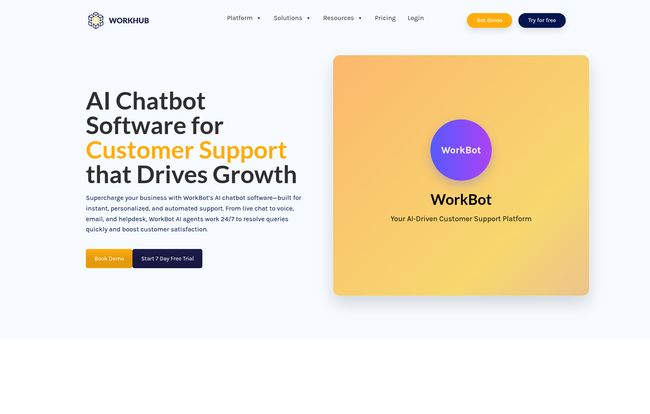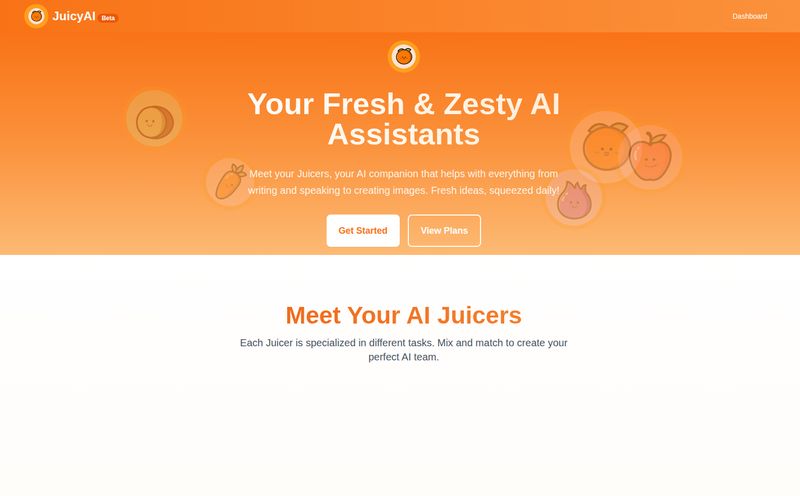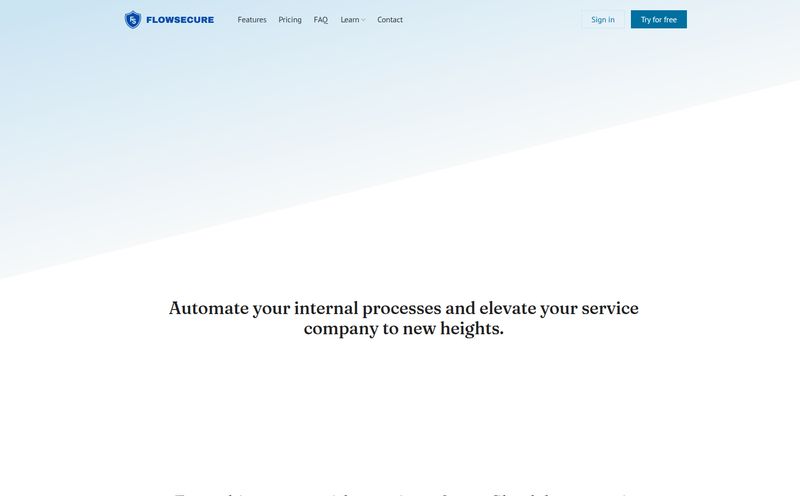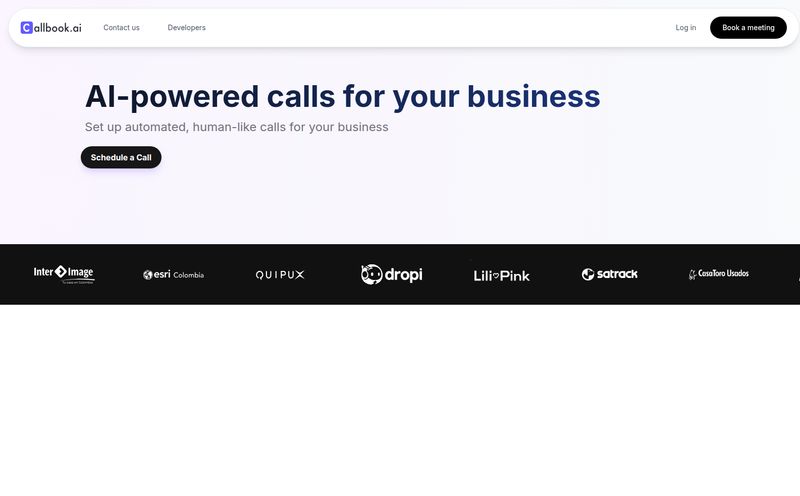The last few years have been a whirlwind for how we work. We all got thrown into the deep end of remote work, and now many of us are paddling around in the weird, murky waters of a “hybrid model.” My desktop is a graveyard of SaaS tool bookmarks—one for chat, one for project management, another for scheduling, and a fourth for... well, I forget what that one does, but I’m too scared to delete it.
It’s a digital mess. A constant state of tab-switching that supposedly makes us more productive but often just leaves me feeling frazzled. Every time a new “all-in-one solution” pops up, my inner skeptic just rolls his eyes. Oh, another one? But every now and then, a tool comes along that makes you lean in a little closer. For me, recently, that tool has been WorkHub.
They’re not just promising to put all your tools in one box. They're promising to put an AI brain in that box to help run the show. And that... that got my attention.
So, What's the Big Deal with WorkHub?
At its core, WorkHub is pitching itself as a “team success platform.” Fancy marketing speak, I know. But what it actually means is that it's trying to be the central nervous system for your team's communication, collaboration, and even its morale. Think of it less as a single tool and more as an entire ecosystem designed from the ground up for teams that aren't sitting in the same room five days a week.
It’s a direct response to the fragmented nature of modern work, where your conversations live in Slack, your tasks in Trello, your meetings in Zoom, and your customer queries in Zendesk. WorkHub’s big idea is to pull all of that under one roof. But the secret sauce, the thing that sets it apart from a simple bundle of features, is its AI layer.
Meet WorkBot: Your New AI Team Member
The star of the WorkHub show is undoubtedly its AI chatbot, WorkBot. We’ve all interacted with terrible chatbots, right? The ones that get stuck in a loop if you ask a question that’s slightly off-script. It’s infuriating. WorkHub seems to have understood this pain point deeply.
Their WorkBot is designed for human-like interaction. It can be trained on your company’s knowledge base—think of all your support docs, FAQs, and internal wikis—to provide genuinely helpful answers. For customer support, this is huge. It's like having a tireless agent who has memorized every piece of information about your company and can handle multiple queries at once, 24/7.

Visit WorkHub
It’s More Than Just a Chatbot
Where it gets really interesting is how this AI integrates with other functions. It powers a Smart Email feature, helping to generate responses and manage your inbox. It centralizes data, giving the AI a holistic view of customer interactions so it doesn't ask the same question five times. You can even set up multiple Intelligent AI Agents for different departments—one for sales, one for support, one for internal IT questions. It’s like building a small army of digital specialists.
And for those moments when a human touch is needed? It has a seamless handover to a live representative. The AI does the heavy lifting, and your human team steps in for the critical, high-touch moments. That, to me, is the proper way to use AI in a business setting.
A Full Toolbox for Team Collaboration
Okay, so the AI is cool. But what about the day-to-day stuff? A fancy chatbot doesn't help me if I still need three other apps to get my work done. Thankfully, WorkHub has built out a surprisingly comprehensive suite of tools to back it up.
Communication, Tasks, and Recognition in One Place
You get all the standard communication features you’d expect: real-time chat, audio/video calls, and screen sharing. But it also includes a robust task management system, appointment scheduling that syncs up with your calendar, and even a tool for secure electronic signatures. No more exporting a PDF, signing it with a third-party app, and re-uploading. These little workflow frictions add up, and eliminating them is a real win.
One feature that I personally find quite brilliant is BRAVO, their employee rewards and recognition tool. In a hybrid or remote setup, it’s so easy for good work to go unnoticed. A tool that formalizes and encourages peer-to-peer recognition isn't just a 'nice-to-have'; it’s critical for maintaining morale and company culture when you can't just give someone a high-five in the hallway. Some people might argue that this kind of stuff should be organic, but in my experience, making it easy and visible helps build a positive feedback loop that benefits everyone.
Let’s Talk Money: The WorkHub Pricing Structure
Alright, this is where the rubber meets the road. A great tool is only great if you can afford it. WorkHub uses a freemium model with a token-based system for its AI features, which is pretty common these days. Here’s a quick breakdown of their plans.
| Plan | Price | Best For | Key Features |
|---|---|---|---|
| Free | $0 /month | Getting started & small teams | 500,000 AI tokens, 5 AI agents, 5 human reps, basic analytics, 1 test voice call. |
| Pro | $90 /month (billed annually) | Growing businesses | 1,000,000 AI tokens, 10 AI agents, unlimited knowledge base, advanced analytics, full AI voice agent access. |
| Enterprise | Custom Pricing | Large organizations | Unlimited agents, custom model training, 24/7 support, SLAs, on-premise options. |
| Additional Tokens | $5 /50,000 tokens | Scaling AI usage | Unused tokens roll over to the next month. |
My take? The Free plan is genuinely useful. It’s not one of those crippled free trials; you can actually run a small support operation on it to see if it works for you. The Pro plan feels like the sweet spot for most small-to-medium businesses that are serious about automating customer support and improving internal workflows. The jump to Enterprise is for the big leagues who need custom integrations and security guarantees. The pricing feels transparent and fair, which is a breath of fresh air.
The Real-World Test: Is WorkHub Worth It?
No tool is perfect. After digging through WorkHub, here's my honest assessment.
The biggest advantage is the sheer power of having everything integrated. The potential efficiency gain from not having to context-switch between five different apps is massive. The AI is a genuine force multiplier for support teams, and the focus on hybrid team success feels incredibly timely and well-thought-out. It’s not just a collection of features; it's a coherent philosophy on how modern teams should operate.
On the flip side, there's a learning curve. This is not a simple to-do list app. To get the most out of WorkHub, you’ll need to invest some time in setting up the knowledge base for the AI, configuring workflows, and getting your team onboard. Also, while the AI is powerful, it’s not magic. You still need to monitor its interactions to ensure accuracy and relevance, especially in the early days. It's a powerful assistant, not a replacement for human oversight.
So, Who Should Give WorkHub a Shot?
In my opinion, WorkHub is a fantastic fit for a few key groups:
- Growing Startups and SMBs: Companies that need enterprise-level tools (like an AI helpdesk) without the enterprise-level price tag.
- Hybrid or Fully Remote Companies: Any organization struggling to maintain cohesion, culture, and clear communication with a distributed workforce.
- Businesses with High-Volume Customer Support: If your team is buried under repetitive customer queries, the WorkBot could be a complete game-changer.
If you're a solo freelancer, it might be overkill. If you're a massive corporation with deeply entrenched legacy systems, the migration might be a challenge (though their Enterprise plan seems designed for that). But for that huge segment in the middle? I think WorkHub presents a really compelling case.
My Final Thoughts
I started out skeptical, but I’m walking away impressed. WorkHub isn’t just another tool to add to the pile; it’s a serious attempt to replace the pile. By combining a powerful AI engine with a solid suite of collaboration and communication tools, it addresses the real, tangible pain points of modern hybrid work. It's an ambitious platform, and while it may require a little effort to tame, the potential payoff in productivity and team sanity seems well worth it. In a sea of one-trick ponies, WorkHub is trying to be the whole stable. And for the most part, it’s succeeding.
Frequently Asked Questions about WorkHub
- Is WorkHub really free to get started?
- Yes, it is. The Free plan is quite generous, offering 500,000 AI tokens, and allowing you to use up to 5 AI agents. It's a great way to test the platform's core functionality before committing to a paid plan.
- Can WorkHub completely replace tools like Slack or Asana?
- Potentially, yes. It has built-in chat, video calls, and task management designed to cover the core functions of those separate apps. The main benefit is having all that activity integrated in one place, connected to your customer support and AI assistants.
- What is a 'token' in WorkHub's pricing model?
- Tokens are basically the currency you use for AI actions. Every time the AI retrieves information from your knowledge base or generates a response, it consumes a certain number of tokens. The plans come with a monthly allowance, and you can buy more if needed.
- Do I need to be a tech expert to set up the WorkBot?
- While there is a learning curve to maximize its potential, the basic setup is designed to be user-friendly. You primarily 'train' the bot by feeding it your existing documents, URLs, and FAQs. You don't need to be a coder, but you should be prepared to spend some time on the initial configuration.
- Is WorkHub only for hybrid teams?
- Not at all. While its features are particularly powerful for solving hybrid work challenges, they are just as beneficial for fully remote or even fully in-office teams. The goal of streamlined communication, efficient support, and employee recognition is universal.
- How does the AI Voice Agent work?
- The AI Voice Agent is a feature designed for customer phone support. It can answer calls, understand spoken questions, and provide answers from the knowledge base, just like the chatbot. It can also route calls to human agents when necessary. It's available on the Pro and Enterprise plans.
Reference and Sources
- WorkHub Official Pricing Page
- "Making the Hybrid Workplace Fair" - Harvard Business Review



